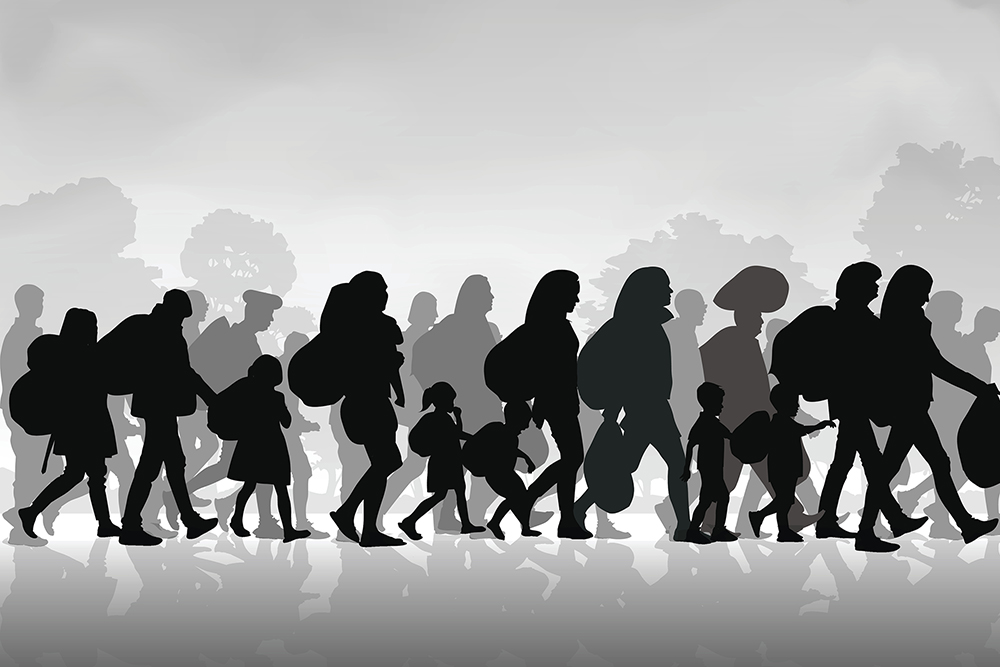
White House officials will reportedly convene a high-level meeting tomorrow (Tuesday) to discuss the FY 2020 refugee resettlement ceiling, which is expected to drop by at least half, from the current FY 2019 ceiling of 30,000.
I wrote a couple of weeks ago of the need to address resettlement away from alarming stands. Let me reiterate a number of points here.
Resettlement is just the tip of the iceberg
Out of some 26 million refugees worldwide, and the 1.2 million refugees in need of resettlement, according to the UN High Commissioner for Refugees (UNHCR), only 81,337 were referred for resettlement in 2018 (0.3 percent of all refugees and 7 percent of those considered to be in need of resettlement), and only 75,188 in 2017. UNHCR submission capacities are indeed limited.
Yet many choose to focus on the tip of the iceberg while ignoring millions of other refugees, absent news headlines and high-level meetings. The fact is, the United States under the Trump administration is still the world leader when it comes to humanitarian outreach and remains committed to assisting millions of refugees and displaced people overseas.
Resettlement should not be the "sole barometer" to measure humanitarian efforts
In FY 2018 alone, the U.S. contribution to UNHCR "reached a historic high of nearly $1.6 billion to support UNHCR's response to historic levels of displacement and humanitarian need." The United States is also "the leading donor of humanitarian assistance in response to the Syria crisis", with more than $9.1 billion directed toward Syria-related humanitarian assistance since the beginning of the crisis. As detailed in a 2019 State Department fact sheet, "the United States is providing urgently-needed food, shelter, sanitation and hygiene, medical care, education, and other relief to help assist the nearly 12 million people suffering inside Syria, as well as the nearly 5.7 million refugees in the region". (Emphasis added.)
U.S. humanitarian efforts also include assisting thousands of asylum-seekers who are already present on American soil. In recent years, the United States witnessed a significant increase in the number of asylum seekers in the country: "The number of pending affirmative asylum cases at the end of FY 2018 is about 320,000 (approximately 492,000 individuals), a 10 percent increase from the end of FY 2017 and an increase of over 500 percent since FY 2009..." (Emphasis added.)
Even if a few drops in the ocean, resettlement is crucial if applied properly
Proximity help cannot be in lieu of resettlement. True, we can help many more refugees where they are with the resources available to us as my colleague Steven Camarota has explained. We can even find refugee resettlement immoral if we adhere to my colleague Mark Krikorian’s perspective: "each refugee we bring to the United States means that 11 others are not being helped with that money. Faced with 12 drowning people, only a monster would send them a luxurious one-man boat rather than 12 life jackets". But resettlement is not necessarily about “helping a few at the expense of the many."
Resettlement is definitely not the appropriate answer (whether financially or morally) when randomly used, as it is now. But when properly applied, it is about getting one off the boat (to use Krikorian's metaphor) to a safe place because, unlike the other 11, that one cannot survive long enough to make it to shore. It is about throwing a life jacket to the one on the boat who cannot swim.
The problem is that resettlement is not being used as a ticket out for those who are genuinely at risk in the countries they've fled to (see here and here). We are not taking off the metaphorical boat the one refugee who has the least chance of surviving; instead, we (and UNHCR) are choosing randomly.
We know that only 17 percent (13,823 refugees) of UNHCR global resettlement submissions in 2018 were urgent or emergency cases. Assuming UNHCR's global urgent and emergency submissions are up to 15,000 next year, and if the U.S. was to focus on resettling 100 percent of those cases only, then the FY 2020 resettlement ceiling should be 15,000.
Resettlement for those (like Iraqis and Afghans) who served along U.S. troops abroad?
Former Defense Secretary Jim Mattis and a number of retired military officers urged President Trump to take into account the fate of Iraqis and Afghans who risked their own lives and their families' lives by supporting the U.S military and diplomats. The Special Immigrant Visas (SIVs) for Iraqis and Afghans put in place to welcome those specific groups to the United States might indeed be archaic and it could be time Congress addressed the concerns raised by members of the U.S. military.
While the commitment to help those who risked their lives for us should remain strong, the solution is not by creating more spots within the resettlement program, especially ones that would involve sensitive intelligence information. At a time when stories about alleged corruption in refugee resettlement at the UNHCR are being published, and widespread reports of UNHCR staffers accepting bribes from refugees in order to refer them for resettlement in a Western country are being documented, the United States needs to reassess its total reliance on UNHCR rather than expand the refugee resettlement program.
Melodramatic headlines about abandoning the refugee cause might draw attention, but one only needs to look beneath the surface to see that the United States remains the number-one resettlement country in the world, while assisting millions of refugees and displaced populations abroad. In the coming fiscal year, the Trump administration can get the resettlement program back on the right track: instead of playing God and randomly picking a lucky few for a life in the United States, resettle all urgent and emergency cases submitted by UNHCR worldwide next year. A 15,000 ceiling should cover all of next year's life-jackets.
